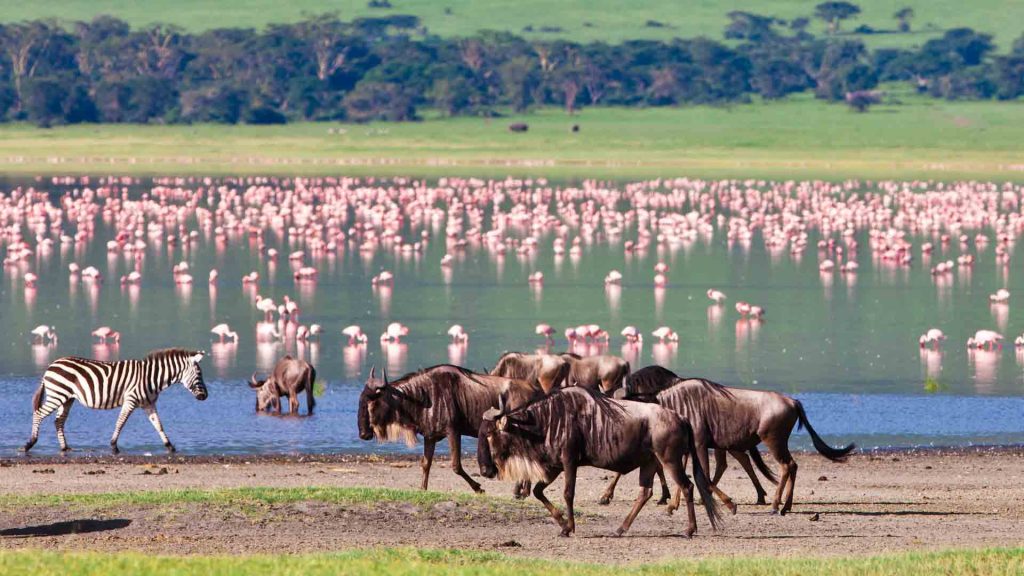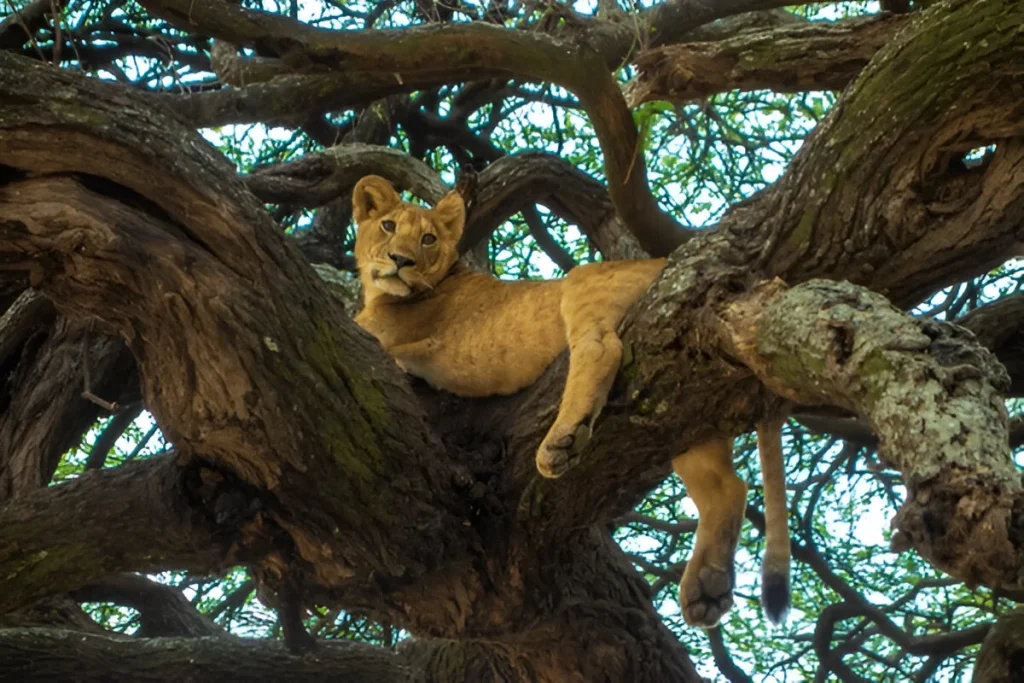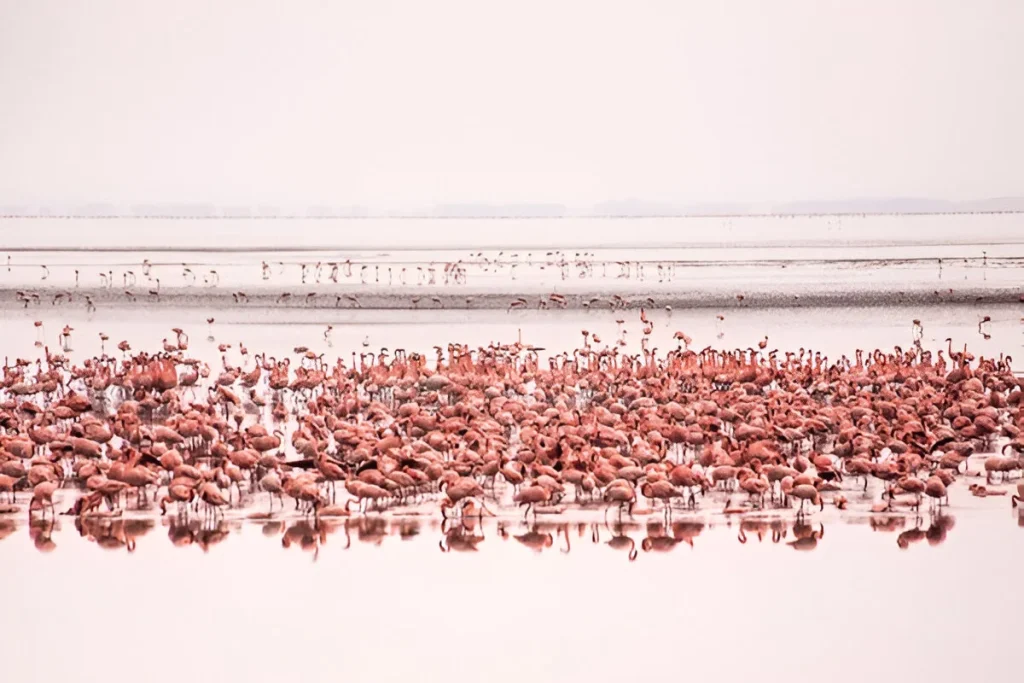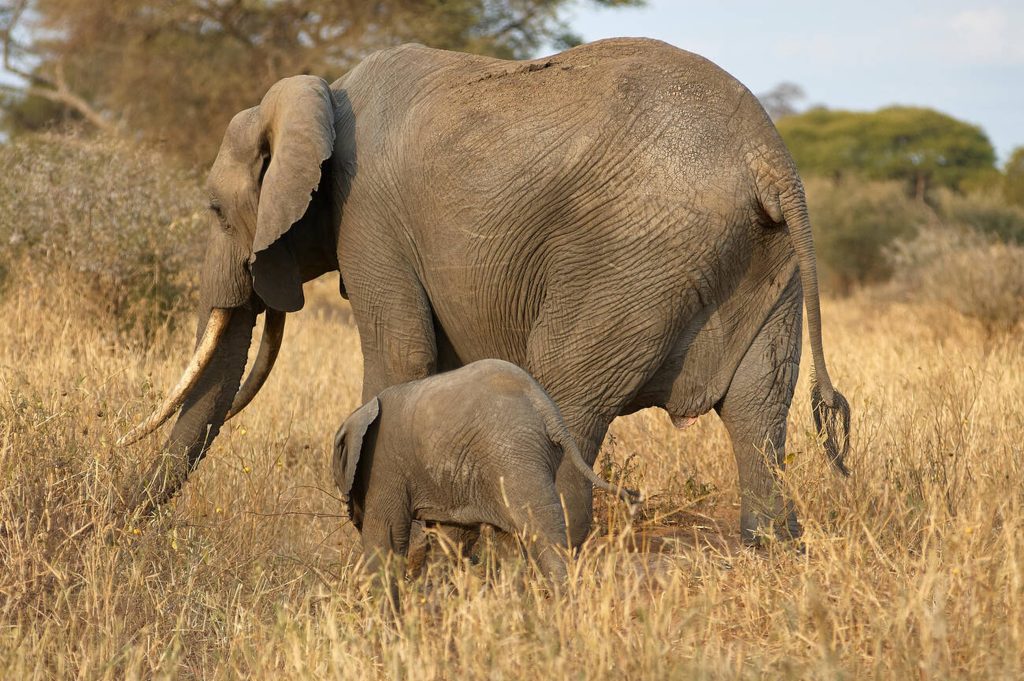Lake Manyara National Park
Lake Manyara National Park, nestled in the heart of Tanzania’s Northern Safari Circuit, is a captivating destination renowned for its rich biodiversity and stunning landscapes. Spanning 330 square kilometers, the park offers a unique blend of ecosystems, from dense forests to the shores of Lake Manyara, home to an array of wildlife, including tree-climbing lions and over 400 bird species. Its proximity to both Arusha and the iconic Ngorongoro Crater makes it a must-visit for travelers seeking a dynamic safari experience. As a dedicated ecologist and tour operator, I take great pride in curating unforgettable journeys that showcase the natural beauty and conservation efforts of this extraordinary park, ensuring every visitor experiences the magic of Lake Manyara in its full glory.

The Lion of Lake Manyara.
In the 1960s, a famous lion from Lake Manyara was the subject of scientific study due to its unusual behavior of climbing trees. Researchers speculated that the lion might have been avoiding territorial conflicts or seeking a break from the heat. The behavior became legendary and drew attention to the park’s fascinating wildlife.

Activities To Do in Lake Manyara National Park.
- Wildlife photography & filming
- Manyara Treetop Walkway
- Canoeing (Seasonal)
- Night Game Drives
- Walking Safaris
- Cultural Tours
- Game Drives
- Birdwatching

Climate.
Lake Manyara National Park has a tropical climate with two main seasons:
- Dry Season (June – October): Characterized by sunny days and cooler temperatures, especially in the early mornings and evenings. Wildlife congregates around water sources, making it the best time for game viewing. Temperatures range between 18°C – 30°C (64°F – 86°F).
- Wet Season (November – May): Marked by two rainy periods—the short rains (November – December) and the long rains (March-May). The landscape becomes lush and green, attracting migratory birds and creating a stunning backdrop for photography. Temperatures range between 20°C – 32°C (68°F – 90°F), with higher humidity levels.
Due to its location near the Rift Valley escarpment, Lake Manyara enjoys a relatively mild climate year-round, making it a great destination to visit at any time of the year.

Best Time to Visit Lake Manyara National Park.
Lake Manyara National Park is a year-round destination, but the best time to visit depends on the activities you are interested in:
- For Wildlife Viewing (Best Time): June to October (Dry Season) – Animals gather around water sources, making them easier to spot. The vegetation is also less dense, improving visibility.
- For Birdwatching & Scenic Beauty: November to May (Wet Season) – Migratory birds arrive, and the park transforms into a lush, green paradise. This is also the best time for photography, with fewer tourists and stunning landscapes.
- For Canoeing & Treetop Walkway: Wet Season (when lake water levels are high) – Canoeing may be available, offering a unique safari experience.
While June to October is the best for wildlife viewing, November to May is excellent for birdwatching and lush scenery, making Lake Manyara an ideal destination throughout the year.

How to Get to Lake Manyara National Park.
Lake Manyara National Park is easily accessible by both air and road:
- By Air: The nearest airport is Lake Manyara Airstrip, which receives charter and scheduled flights from Arusha, Zanzibar, and other major safari destinations. The airstrip is just a 10-minute drive from the park entrance.
- By Road: The Park is approximately 126 km (78 miles) from Arusha, taking around 2 hours by car on a well-paved road. It is also easily accessible from other northern safari destinations:
- Ngorongoro Crater: 1.5 to 2 hours (60 km)
- Serengeti National Park: 4 to 5 hours (200 km)
- Tarangire National Park: 1.5 hours (70 km)
Most visitors travel by private safari vehicles or book organized tours, which include transportation and expert guides for a seamless safari experience..
Facts About Lake Manyara National Park.
- The area size of 330 square kilometers (128 square miles), with the lake itself accounting for around 200 square kilometers of the park during the wet season.
- Established in The Park was officially established in 1960 and is one of Tanzania’s oldest national parks.
- Park stretches along the Rift Valley Escarpment
- Birding hotspot: 400 species of birds
The Mourning Rituals of Elephants.
Elephants, renowned for their strong social bonds and remarkable intelligence, have been observed exhibiting complex and emotional behavior in response to the death of a calf, including burying their young.
This has been seen in various African elephant populations, including those in Tanzania. When a calf dies, the herd sometimes covers the body with branches, leaves, and mud, which is believed to be a sign of mourning and respect.
Elephants have a profound memory, and it has been documented that they revisit the remains of deceased family members, including calves, months or even years later.
This ritualized mourning behavior reflects the deep emotional lives of elephants, showcasing their sensitivity to death and the strong familial ties that define their social structures.














